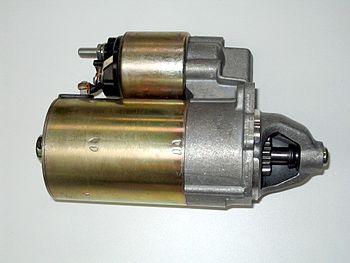
Some of the most common causes for a steering wheel shaking come from wheel and tire problems, but you must also consider suspension issues and faulty brakes might also be the problem. When does the shaking happen, this should be the first thing drivers pay attention.
Very often, vibrations during acceleration or when traveling at high speeds indicate a problem with the vehicle’s wheels or having trouble when slowing down is more often due to brakes. A number of suspension issues and imbalances can also contribute, particularly if the vehicle is over ten years old.
Steering Column
If the steering wheel is shaking, there is a problem in the steering column itself. This happens when there are lose screws or twisted wires in the connection between car and steering wheel. People with these sorts of problems often notice the shaking when the temperature is very cold. Frozen screws and sockets don’t always have the same friction as they do when thawed, which can make sounds and vibrations more pronounced.
Bent Wheels
The vehicle’s wheels are always the first to check by a mechanic when there is shaking steering wheels problem.. Cars and trucks depend on a complex system of working parts for stability, but the four tires are the backbone of that system. During movement, if a wheel is bent, the whole frame of your vehicle can shake. People with this problem often notice that their steering wheels almost always shake a little bit, though the real effects tend to be most pronounced during acceleration.
Damaged Bearings
Wheel bearing problems are similar. Cars transfer energy to the tires through a drive shaft anchored by wheel bearings that help balance the weight of the car (known as the radial load) with the energy of movement (known as the thrust load). The pressures can become imbalanced when one or more bearings is no longer doing its job. It is a common warning, that when a steering wheel shakes while driving straight but then it stops going around a curve means that a ball joint is in need of replacement. In addition, a steering wheel that is smooth while driving straight but becomes shaky while turning is often a sign of bad tie rod ends.
Tire Trouble
Sometimes the problem is as simple as a flat tire. In this case, minor shaking is the very first thing a driver will notice when they start to drive. Very often, the shaking is accompanied by violent vibrations all over the car that gets worse as driving progresses. Soft or bulged tires often bring about similar reactions.
A broken belt may be to blame in the case of radial tires. Broken belts can cause the tire tread to take on an S – shaped form or simply to bulge out in the tread line. Either problem will cause the steering wheel to shake and wobble.
Simple tire imbalance can also be a cause of shaking. Most mechanics recommend that motorists have their tires rotated, or balanced, every few thousand miles. This is recommended to promote even wear, but it is also to maintain equilibrium in the car as a whole. If one side or all of the wheels of the car has seen excessive or not proportioned wear, the steering column will sometimes shake as a consequence.
Brake Problems
The goal of the brakes is to slow down the entire vehicle, which is often more complicated than simply stopping the tires from spinning. Problems with brake pads, cords, or connections can lead to shaking or vibrating in the steering column as misguided energy seeks an outlet.
Suspension Issues
A car or truck’s suspension is a complex system of rods, pistons, and shocks. This system keeps the vehicle balanced, both in terms of energy output and actual stability and problems with this system can lead to shaking. Though loose connections, faulty tires, and worn or corroded cylinders are also some of the most common problems. These sorts of problems can be difficult to self-diagnose for people without mechanical expertise. You may ask help from Audi Stuart Service Center to check on your car.
